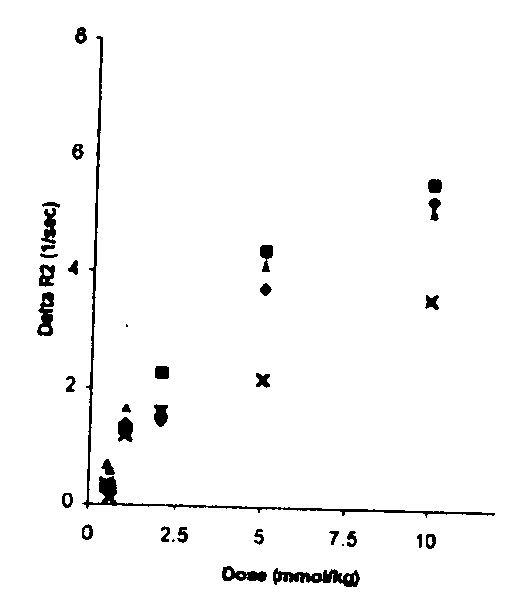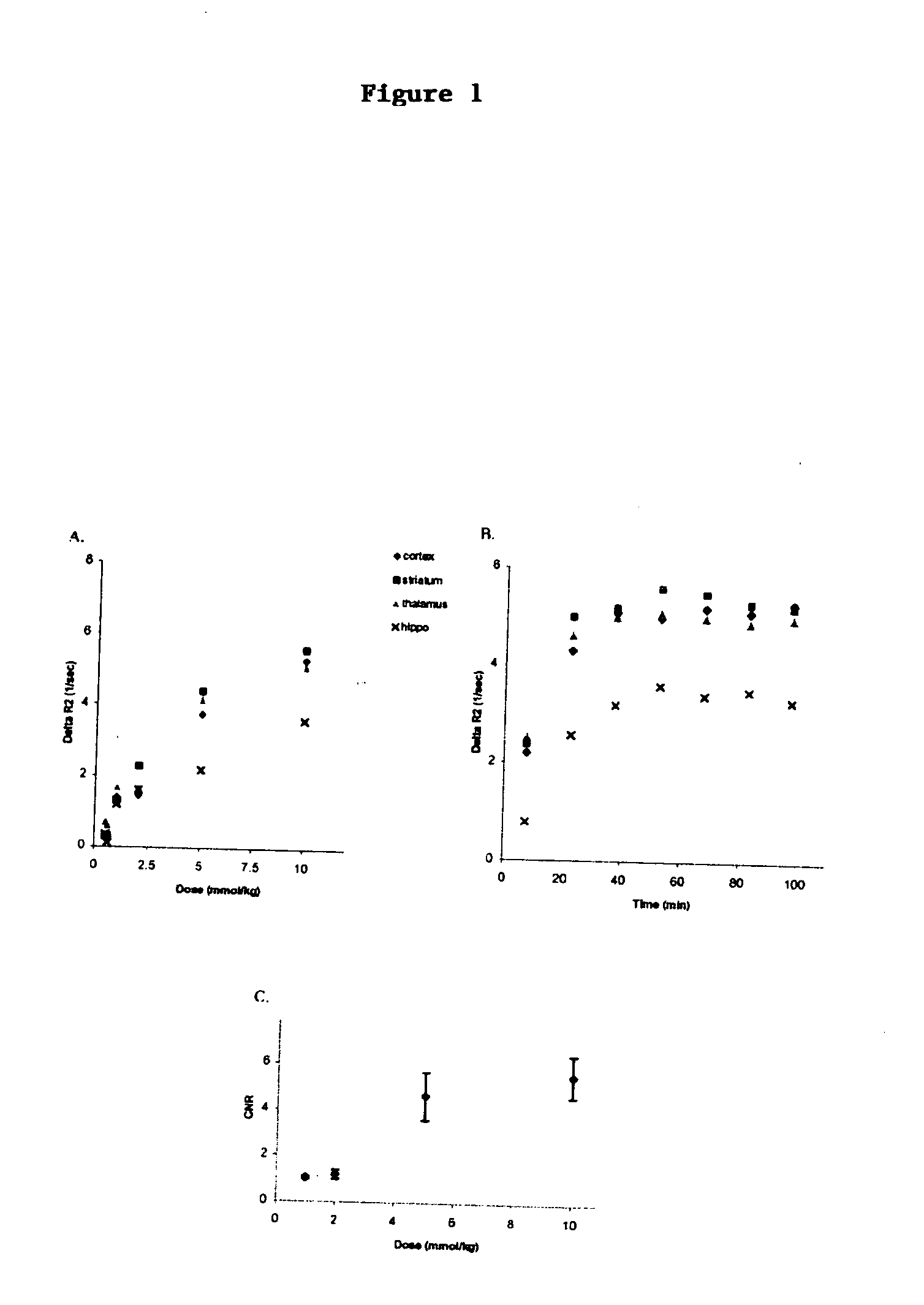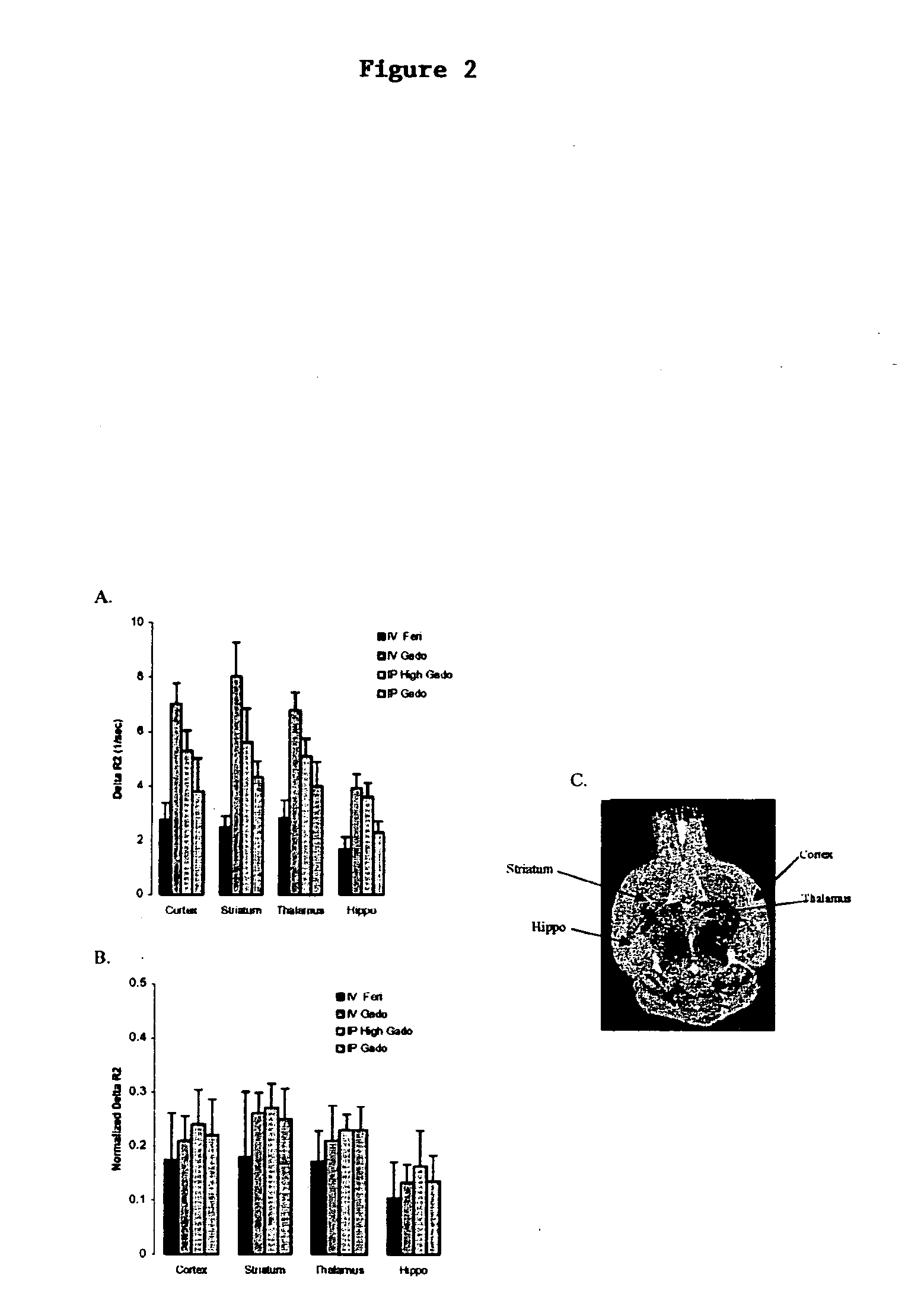Mouse MRI for drug screening
a technology of mouse mri and drug screening, which is applied in the field of mouse mri for drug screening, can solve the problems of insufficient spatial resolution, change in cerebral blood flow and volume, and inability to use mice with adequate spatial resolution
- Summary
- Abstract
- Description
- Claims
- Application Information
AI Technical Summary
Problems solved by technology
Method used
Image
Examples
experiment # 1
Experiment #1
Optimizing CBV Maps Generated with IP Gadodiamide
[0083] As expected, higher doses of GD resulted in an increase in AR2 and in CNR (FIGS. 1 A&C). However, a 15 mmol / kg dose caused toxicity, manifested as significant changes in vitals signs in two mice (low SaO2 and RR 72 / 100 and 65 / 110 respectively), therefore the procedure was aborted. Thus, 10 mmol / kg was identified as the optimum dose of GD, and this dose was used for all further experiment unless otherwise indicated. A time course analysis, where the time interval of post-contrast image was systematically varied, showed that the AR2 peaked at approximately 37.5 to 53 minutes post-contrast (FIG. 1B). Since the goal is to keep scan time as short as possible, in order to minimize morbidity and mortality, a 45 minutes time point was identified as the optimum post-contrast time interval.
[0084] As predicted (3, 12), AR2* generated with GE pulse sequences were more sensitive to large vessels compared to AR2 maps generated...
experiment # 2
Experiment #2
Comparing CBV Maps Generated with IV and IP Contrast Agents
[0086] No significant differences (ANOVA: p values>0.05) were observed between the different methods when peak AR2 values were normalized as described above (FIG. 2B). IV feridex and GD peaked at first acquisition time, while IP doses peaked at an acquisition time equivalent to 37.5 minutes. AR2 values obtained with IP GD at 10 mmol / kg provides a similar value as those obtained with 18 mg Fe / kg of intravenous MION (12), while IV feridex produced half of that signal (FIG. 2A).
experiment # 3
Experiment #3
Optimizing Serial Acquisitions of CBV Maps Generated with IP Gadolinium
[0087] Low CNR (1.62+ / −0.59) was observed in the next imaging session when no flush was administered at the end of an imaging session, with a significant statistical difference when compared to the 2 ml or 4 ml flush group (F=30.0 p=0.0001). Using of 2 ml, 4 or 5 ml flush resulted in high and reliable CNR across the three imaging session, no statistical significant differences were observed between these three groups (F=−1.01 p=0.34). FIG. 4 shows three AR2 maps from the same mouse during three different imaging sessions using the same protocol each time, with a one-week interval between images. The values of the AR2 are very similar (mean AR2 whole brain=5.1, 4.9 and 5.3 respectively).
Discussion
[0088] As illustrated in this study, a number of factors need to be considered when using MRI to generate CBV maps in mice. All methods require the use of an intravascular contrast agent, and the choice o...
PUM
 Login to View More
Login to View More Abstract
Description
Claims
Application Information
 Login to View More
Login to View More - R&D
- Intellectual Property
- Life Sciences
- Materials
- Tech Scout
- Unparalleled Data Quality
- Higher Quality Content
- 60% Fewer Hallucinations
Browse by: Latest US Patents, China's latest patents, Technical Efficacy Thesaurus, Application Domain, Technology Topic, Popular Technical Reports.
© 2025 PatSnap. All rights reserved.Legal|Privacy policy|Modern Slavery Act Transparency Statement|Sitemap|About US| Contact US: help@patsnap.com



